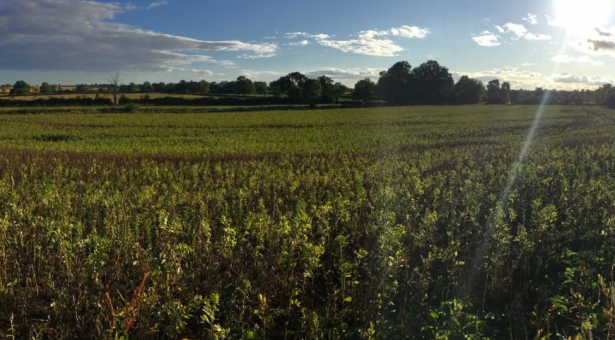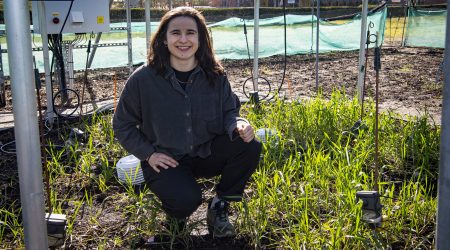Could circadian timing help improve crop protection?

Plants can tell the time, but how might that knowledge help improve crop protection and food security?
This blog by Dr Antony Dodd, a Group Leader here at the John Innes Centre focuses on circadian regulation and cell signaling in plants and Fiona Belbin a postdoctoral research associate at Dartmouth College, who studies the relationship between the iron regulatory and circadian networks in plants, originally published by the Society for Research on Biological Rhythms, answers that question.
“Plant life underlies all of the agriculture that produces our food and plants including crops have internal clocks that are important for their growth.
This might seem surprising, but plants need light to power the photosynthesis that drives their growth, and there is only daylight for part of each 24 hour day. This means that the life of plants is closely linked to the daily changes in the environment.
Plant life has evolved circadian clocks, which they use to detect the time of day and anticipate the regular changes in their environment. This leads to daily or circadian rhythms in the processes of plant cells.
These circadian rhythms provide plants with considerable benefits, for example by readying photosynthesis for the dawn, and making sure that plants do not starve during the night when they cannot photosynthesise.
he changes in the seasons are also important to plants, because flowering must occur during the season that is best for pollination to occur, and for seeds or fruits to develop and mature.
Plants can use their circadian clock to measure the changes in the season, because it allows them to track the seasonal changes in day length.
Circadian rhythms are important for the performance of crops
Circadian rhythms affect many responses of crops to their environments, such as their responses to changes in the temperature and light conditions.
Farmers give crops the best growing conditions that they can, such as by providing extra nutrients and taking steps to remove pests and diseases.
Weeds in fields can present a problem for agriculture, because weeds take the light, water and nutrients that should be received by the crop, so reduce crop yields.
Farmers take various steps to control weeds, including using a variety of herbicides to prevent their growth.
Circadian rhythms in plants influence the effectiveness of some agrochemicals
We wondered whether the circadian rhythms of plants might affect how they respond to herbicides, because it seems that plants can respond differently to herbicides depending on the time of day that they are sprayed.
We tested this idea in the laboratory, using one of the world’s most widely used herbicides.
We found that circadian rhythms in plants caused them to be more sensitive to the herbicide around dawn than around dusk, with the cellular circadian clock being responsible for this daily variation.
We also found that a smaller quantity of herbicide was needed at certain times of day to reduce plant growth compared with at other times, and this was caused by the circadian clock of the plant.
Understanding circadian rhythms could lead to more sustainable crop production
This was a laboratory study and, scaled up, our findings could allow farmers to tune the quantity of herbicide that they use to the time of day- saving time, money, and reducing the quantity of chemicals entering our environments.
In medicine, patients respond better to certain treatments when they are given at certain times of day.
In a similar way, our research suggests that plants also respond differently to chemicals used in agriculture depending on the time of day that they are applied.
This new finding could form the basis of new types of precision agriculture, and potentially contribute to safer and more sustainable food production.”



